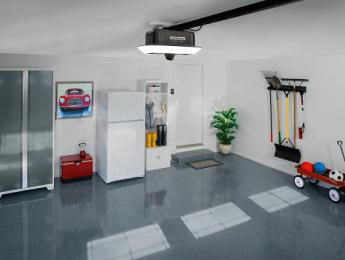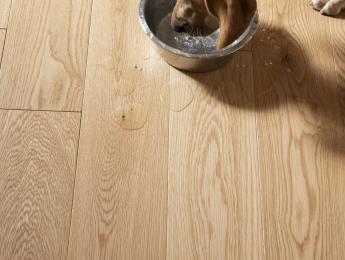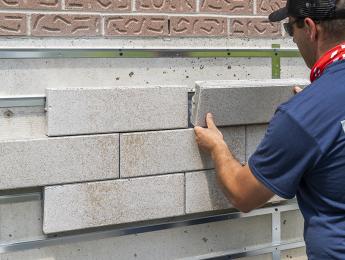DuPont - Systemic Approach to Energy Efficiency

The baseline HERS rating for a newly built home, established by the Residential Energy Services Network (RESNET), is 100. A house with a lower HERS rating uses less energy, with every point on the scale representing a 1% improvement or reduction in energy efficiency. For example, a HERS rating of 50 refers to a house that uses 50% less energy than a standard newly constructed home and about 80% less energy than the average existing home.
The Cummings’ house, once complete, is expected to achieve a HERS rating of 45—a true feat in a mountainous region that while revered for its beauty, is also known for high precipitation levels and fluctuating temperatures. The Berkshires typically get 65 inches of snow each year, more than double the U.S. average of 28 inches. Rain falls an average of 48 days per year, 10 days more than the U.S. average. January and February temperatures hover around freezing in the daytime and typically dip into the teens overnight.
SYNERGY BETWEEN PRODUCTS FOR MAXIMUM PERFORMANCE
|
“It’s important to keep in mind the benefits of using a system of products—something that has been tried and tested together like the DuPont Building Envelope Solutions,” says Alan Hubbell, North American residential marketing leader for DuPont. “DuPont Tyvek systems hold out air and water, while DuPont Styrofoam XPS insulation and Froth-Pak insulation manage thermal comfort and help improve energy efficiency.” |
The Cummings chose DuPont™ Tyvek® HomeWrap®, which incorporates unique material science that helps keep air and water out while letting water vapor escape. It can contribute to improved building durability by helping to protect homes against damaging wind and rain that can penetrate the exterior cladding.
DuPont™ Flashing Tape helps protect the heads and jambs of windows and doors from intrusion by outdoor air, bulk water and wind-driven rain.
DuPont™ FlexWrap™, which is part of the DuPont flashing portfolio, is used to flash hard-to-seal corners and sills around windows and doors and to help protect vulnerable areas against air and water intrusion.
The Great Stuff Pro™ line of spray foam sealants help deal with unwanted air, moisture, pollen or even pests. Great Stuff Pro™ delivers effective, industry-leading products that are tough enough for pros and easy enough for DIYers.
Froth-Pak™ foam insulation is an easily portable kit to fill larger gaps and penetrations quickly and efficiently. It’s a two-component foam that fills cavities, penetrations and cracks in rim joists, roof wall junctures and around pipes and ducts up to two-inches thick.
Working together, these products create a tight seal tough enough to stand up to Berkshire snowstorms and icy temperatures.
By Michele Lerner


